India itself is a mystery. India’s history is so ancient that even history could not record all its events correctly. India’s culture, Tantra, Yoga, Ayurveda are full of mysteries. Here I present 10 mysteries out of the thousand mysteries of India.
1. Was Gumnami Baba, Subhash Chandra Bose in Hiding
It’s a popular belief in India that Subhash Chandra Bose did not die in the Flight that allegedly crashed in Taiwan. Even Justice Mukherjee commission proved that there was no plane crash on that day in Taiwan at all.
It’s believed that Bose lived in Faizabad, near Ayodhya in Uttar Pradesh as a monk named Gumnami Baba or BhagwanJi . Justice Manoj Kumar Mukherjee, who probed into the disappearance of Netaji Subhas Chandra Bose, stated in a documentary shoot that he is sure that Bhagwanji was none other than Bose ! (http://www.youtube.com/watch?v=MdlvatHFBQs) . Handwriting analysis expert and former Additional Director of the National Institute of Criminology and Forensic Science, Dr B. Lal deposed before the Justice Mukherjee Commission of Inquiry that handwritings of Bhagwanji and Bose did match !
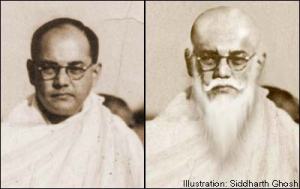
After the death of of Gumnami Baba, Many articles were recovered from his house which relates him directly to Netaji. However no probe was launched by the Indian govt to verify the claims. Rather the UPA govt thrashed the report of Mukherjee Commission with out giving any reason. So why the govt do not want to disclose the truth about a great Freedom fighter of India ? It is believed that may top leaders of congress at that time did not want Netaji in India . What is the reason ?
2. The man who never eat or drink, Meet Prahlad Jani
Prahlad Jani, also known as “Mataji”, is an Indian monk (born Chunriwala Mataji, 13 August 1929 in Charada, Mehsana district, Gujarat). He claims to have lived without food and water since 1940, and says that the goddess Amba sustains him.He researchers and scientists have failed to get any clue of his survival. From 22 April until 6 May 2010, Prahlad Jani was observed and tested by a team of 35 researchers from the Indian Defence Institute of Physiology and Allied Sciences(DIPAS) as well as some international scientists.
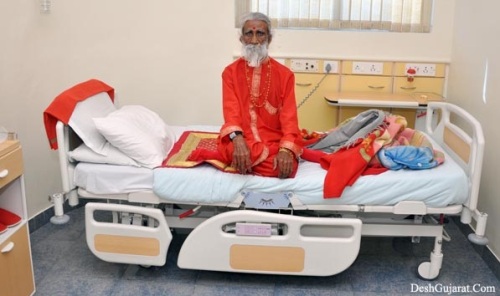
The team studied Jani with daily clinical examinations, blood tests, and scans. Round-the-clock surveillance was reportedly followed using multiple CCTV cameras and personal observation. The researchers say that Jani was taken out of the sealed room for tests and exposure to sun under continuous video recording. According to the researchers, Jani’s only contact with any form of fluid was said to be during gargling and occasional bathing starting from the 5th day of observation, and the toilet in Jani’s room was sealed to test his claim that he did not need to urinate or defecate !
After fifteen days of observation during which he reportedly did not eat, drink or go to the toilet, all medical tests on Jani were reported as normal and researchers described him as being in better health than someone half his age !
In 2006, The Discovery Channel aired a documentary called “The Boy with Divine Powers” featuring a five minute interview with Jani.
So what is the mystery that keeps him alive without food, water, proteins? Science has no answer! In Hindu mythologies we find many sadhus (monks) who never took any food or drink in their lifetime. Is it the power of Yoga or the power of any secret knowledge?
3. The Brahma inside the statue of Lord Jagannath Puri
Puri is one of the four holiest places for Hindus (Char Dham). It’s the land of Lord Jagannath who is worshipped as one form of Lord Vishnu.
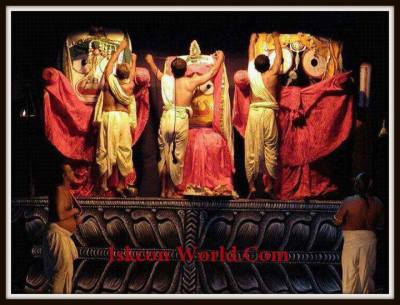
In the Statue of Lord Jagannath, There is one mysterious object which is called “Brahman”. It is believed that the Brahman is a part of Lord Krishna’s physical body. After the death of Lord Krishna, Arjun along with his other brothers cremated him in pyre. The whole body of Lord Krishna was turned into ashes, but the heart (pinda) of Krishna was still burning for years. Following a divine order, they threw the heart in the sea. It is said that this pinda or heart was seen floating as daru (log of a tree) in the sea. King Indradyumna, who was an ardent devotee of Lord Jagannath retrieved the log.
This log is now called as Brahman which is inside Lord Jagannath Statue. In every 12 years during the Naba Kalebara, The statue of Lord Jagannath is changed, However The Brahman is never changed. Its transferred to the new statue.
What’s interesting here is that nobody till date has been able to experience what actually is this “Brahman”. When asked of their experience at this time, the Dayitapatis say, “It is very difficult to express what Brahman is. It cannot be seen or touched. Our eyes are blindfolded and our hands are covered with cloth when we carry it. Yet a powerful feeling is very much present, like a rabbit jumping in our hands. This is our experience. Beyond this, exactly what this Brahman is that is so powerfully felt, nobody is able to say”.
It is told that If anybody sees the Brahman, will die. The Government of Odisha therefore orders a full blackout of light on this one night in the whole town of Puri.
4. Was Taj Mahal a Hindu Temple ?
The beauty of Taj Mahal attracts lakhs of people. However some people see more than the beauty of Taj Mahal. It is said that Taj Mahal was a Hindu temple which was partly modified by Shahjahan .
The Muslim invasion of India is one of the bloodiest in History. Entire cities were burnt down and the populations massacred, with hundreds of thousands killed in every campaign, and similar numbers deported as slaves. Every new invader made (often literally) his hills of Hindus skulls. Thus, the conquest of Afghanistan in the year 1000 was followed by the annihilation of the Hindu population; the region is still called the Hindu Kush, i.e. Hindu slaughter. Afghanistan is now a Muslim country. The Bahmani sultans (1347-1480) in central India made it a rule to kill 100,000 captives in a single day, and many more on other occasions.
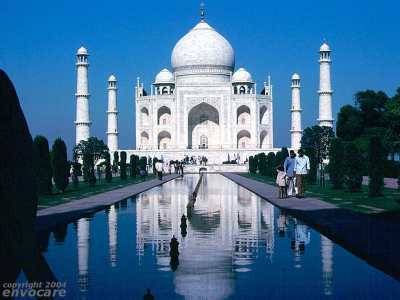
During their conquest they used to destroy lakhs of Hindu, jain and Buddhist temples. Was Taj Mahal one of those victim of the blood-thirsty moghuls ?
The famous historian Shri P.N. Oak has proven that Taj Mahal is actually Tejo Mahalaya– a shiv temple-palace. His work was published in 1965 in the book, Taj Mahal – The True Story. The most valuable evidence of all that Tejo Mahalaya is not an Islamic building is in the Badshahnama which contains the history of the first twenty years of Shah Jahan’s reign. The writer Abdul Hamid has stated that Taj Mahal is a temple-palace taken from Jaipur’s Maharaja Jai sigh and the building was known as Raja Mansingh’s palace.
5. Skeletons in Roopkund Lake
Roopkund is a high altitude glacial lake in Uttarakhand state of India, lies in the lap of Trishul massif and famous due to hundreds of human skeletons found at the edge of the lake.
When snow melts, hundrends of Human skulls are seen floating in the water. Who were those people who died here ? How did they die ? Its still a mystery.
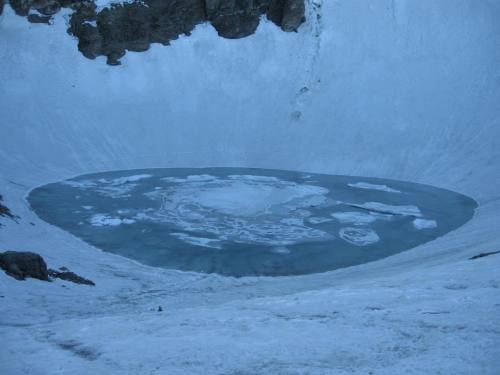
After studying fractures in the skulls, the scientists in Hyderabad, Pune and London determined that the people died not of disease, but of a sudden hailstorm. The hailstones were as large as cricket balls, and with no shelter in the open Himalayas, many, or possibly all of them, perished. Furthermore, with the rarefied air and icy conditions, many bodies were well preserved. With landslides in the area, some of the bodies made their way into the lake.
6. Shani Shingnapur: A village without any doors or locks !
In today’s world, When banks are robbed in broad day light. There is a village in India, where there is no locks or doors in any house !
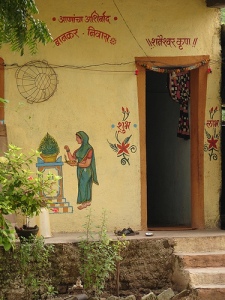
Shani Shingnapur or Sonai is a village in the Indian state of Maharashtra. Shingnapur is also famous for the fact that no house in the village has doors, only door frames. Despite this, no theft is reported in the village. Villagers never keep their valuables under lock and key. Villagers believe that the temple is a “jagrut devasthan” (lit. “alive temple”), meaning that the god here is very powerful. They believe that god Shani punishes anyone attempting theft
In January 2011, the United Commercial (UCO) Bank opened a ‘lockless’ bank branch in the village, the first of its kind in the country !
7. Was an Indian the first man to make an aeroplane?
Hindu Scriptures like Vedas are one of the first sources of scientific knowledge that were revealed to Human beings by God.
The now popular cultures like Yoga, Ayurveda, Astrology, Astronomy finds their origin in the Vedas. The Vaimānika Shāstra ( वैमानिक शास्त्र) is a Sanskrit text on aeronautics.
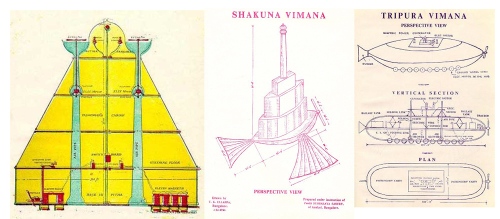
Subbarāya Shāstry and Shivkar Bāpuji Talpade were two Indian scientists and Maharashtrian members of the Pathare Prabhu community who, some believe to have constructed and flown India’s first unmanned airplane in the year 1895 to a height of 1500 feet. This event is supposed to have occurred 8 years before the Wright brothers’s Wright Flyer, the first controlled, powered and sustained heavier-than-air human flight.
Reports concluded that he obtained the designs from their Guru that consisted of parts of the Vedic texts and designs of Vimanas. The plane flew only a short distance before crashing. The plane allegedly had a mercury ion engine (that seems a bit implausible). They later discontinued his further research on plane due to shortage of funds and no recognition for their achievement. According to the chronicles of one of his student, it flew to a height of 1500 feet before crashing to earth
Details here http://oldphotosbombay.blogspot.in/2010/08/1895-talpades-flight-over-chowpathy.html
8. The Iron Pillar of Delhi
The Iron Pillar located in Delhi, India, is a 7 m (23 ft) column in the Qutub complex.
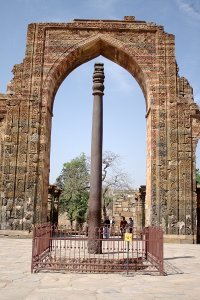
The Delhi iron pillar is testimony to the high level of skill achieved by ancient Indian iron smiths in the extraction and processing of iron. The iron pillar at Delhi has attracted the attention of archaeologists and corrosion technologists as it has withstood corrosion for the last 1600 years. The pillar carries a number of inscriptions and graffiti of different dates which have not been studied systematically despite the pillar’s prominent location and easy access. The oldest inscription on the pillar is in Sanskrit, written in Gupta-period Brahmi script. This states that the pillar was erected as a standard in honour of Viṣṇu
9. The reincarnation of Shanti Devi
Shanti Devi (11 December 1926 – 27 December 1987) was born in Delhi, India. As a little girl in the 1930s she began to claim to remember details of a past life.
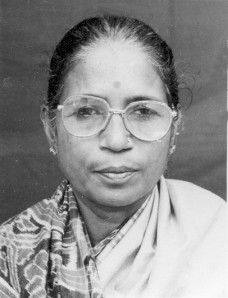
When she was about four years old, she told her parents that her real home was in Mathura where her husband lived, about 145 km from her home in Delhi. Discouraged by her parents, she ran away from home at age six, trying to reach Mathura. Back home, she stated in school that she was married and had died ten days after having given birth to a child. Interviewed by her teacher and headmaster, she used words from the Mathura dialect and divulged the name of her merchant husband, “Kedar Nath”.
The headmaster located a merchant by that name in Mathura who had lost his wife, Lugdi Devi, nine years earlier, ten days after having given birth to a son. Kedar Nath traveled to Delhi, pretending to be his own brother, but Shanti Devi immediately recognized him and Lugdi Devi’s son. As she knew several details of Kedar Nath’s life with his wife, he was soon convinced that Shanti Devi was indeed the reincarnation of Lugdi Devi. When Mahatma Gandhi heard about the case, he met the child and set up a commission to investigate. The commission traveled with Shanti Devi to Mathura, arriving on November 15, 1935. There she recognized several family members, including the grandfather of Lugdi Devi. She found out that Kedar Nath had neglected to keep a number of promises he had made to Lugdi Devi on her deathbed. She then travelled home with her parents. The commission’s report concluded that Shanti Devi was indeed the reincarnation of Lugdi Devi
10. Magnetic hill of ladakh
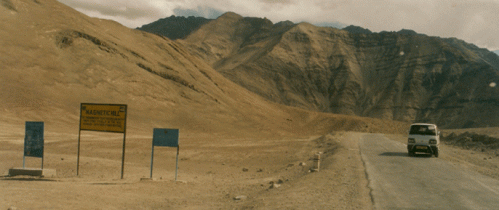
Have you ever heard of a place on earth that defies gravity?
Situated in the lap of snow caped Himalayan ranges , Ladakh in India has a Magnetic hill where a vehicle moves up a steep hill even with their ignition off. The Magnetic hill or Gravity Hill is situated at a distance of 30 km from the capital city Leh and is located on the Leh-Kargil-Baltik national highway, at a height of 14,000 feet above sea level.
No comments:
Post a Comment